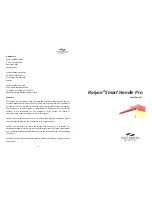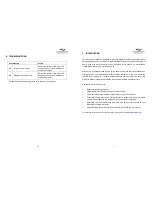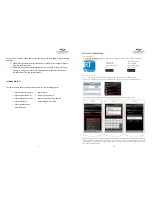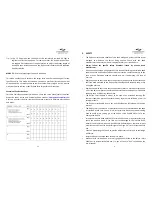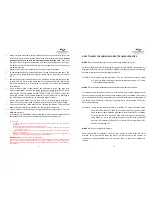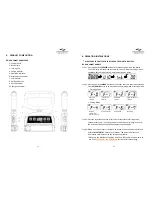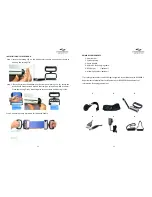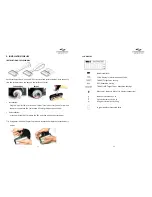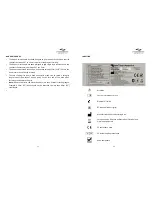
27
Export
Data
There
are
three
ways
to
export
data
(single
user
single
data
set,
single
user
multiple
data
sets,
and
multiple
users
multiple
data
sets).
Click
icon
to
export
data
in
excel
or
photo
format.
For
App
support
in
the
US,
please
contact
Patterson
Medical
ON
800
‐
343
‐
9742.
For
all
other
countries,
please
contact
your
local
Patterson
Medical
country
office
Single
‐
user
single
‐
data
Single
‐
user
multiple
‐
data
Multiple
‐
user
multiple
‐
data
4
Strength
exercise
research
suggests
that
when
a
patient
momentarily
fatigues
a
muscle
group
between
8
to
12
repetitions
of
a
strength
exercise,
the
resistance
is
roughly
70%
to
80%
of
one
repetition
maximum
(1RM).
This
intensity
is
recommended
in
many
clinical
exercise
guidelines
as
it
represents
a
level
of
difficulty
that
is
not
too
stressful
to
patients
yet
sufficient
to
generate
rapid
strength
gains.
The
Rolyan
smart
handle
helps
therapists
to
determine
an
actual
1RM
value
used
to
calculate
the
specific
targeted
exercise
intensity.
For
example,
if
the
patient’s
1RM
is
5kg
(11lbs)
and
the
prescribed
exercise
intensity
is
80%
of
RM,
then
the
initial
resistance
load
is
4kg
(9lbs).
In
addition,
research
demonstrates
that
resistance
must
be
progressed
for
muscles
to
strengthen.
So,
progressive
increases
in
resistance
levels
are
necessary
over
subsequent
exercise
sessions.
The
Rolyan
smart
handle
enables
these
increases
to
be
made
systematically
and
accurately.
Let
us
look
at
how
this
is
accomplished.
70%
to
80%
of
a
1RM
is
challenging
enough
so
that
when
exercising
at
that
intensity
most
people
experience
momentary
muscle
fatigue
between
8
and
12
repetitions.
If
exercising
to
momentary
fatigue,
a
patient
demonstrates
increased
strength
when
they
perform
more
repetitions
at
the
same
resistance
level.
If
initially
a
patient
fatigues
between
8
and
12
repetitions
and
during
a
subsequent
exercise
session
performs
more
than
12
repetitions,
the
intensity
is
then
less
than
the
target
intensity
of
70%
to
80%
of
a
1RM.
Therefore
after
12
or
more
repetitions
the
resistance
should
be
increased.
The
challenge
is
to
know
when
to
increase
the
resistance
and
by
how
much.
Research
suggests
that
when
progressing
resistance
for
those
exercising
from
70%
to
80%
of
a
1RM
the
appropriate
amount
of
an
increase
is
5%.
An
increase
of
5%
usually
results
in
patients
performing
no
fewer
than
8
repetitions
during
the
subsequent
exercise
session.
Limiting
the
increase
to
5%
helps
protect
patients
from
over
‐
exertion
and
ensures
that
they
continue
to
exercise
at
the
resistance
range/dosage
of
70%
to
80%
of
1RM.
Summary of Contents for Rolyan Smart Handle Pro
Page 17: ...32...
Page 18: ...33 34...

